What Are Microwave Steamed Eggs?
Microwave steamed eggs are a quick version of the classic Chinese steamed egg custard (zheng dan) that uses your microwave instead of traditional steaming methods. This dish features beaten eggs mixed with liquid—typically water or broth—that cook into a silky smooth custard with a texture reminiscent of soft tofu or savory flan.
Unlike fried or scrambled eggs which have distinct curds and structure, steamed eggs transform into a unified custard with a trembling, delicate consistency. The texture should be wobbly yet set, similar to a perfectly executed Japanese chawanmushi or Korean gyeran jjim.
The beauty of microwave steamed eggs lies in their simplicity. You need only basic ingredients: eggs, liquid, and seasonings. Traditional recipes might require 15-20 minutes of careful steaming, but the microwave method delivers nearly identical results in just 2-3 minutes.
Many of our readers have shared their surprise at how authentic these microwave eggs taste. One reader, Maria, mentioned: “I was skeptical that microwaved eggs could match my grandmother’s steamed egg recipe, but the texture was nearly identical—and saved me so much time on busy mornings!”
Steamed eggs serve as an excellent protein-rich dish that works equally well for breakfast, lunch, or dinner. Their mild flavor makes them particularly versatile—they can be dressed up with various toppings or served simply with a drizzle of soy sauce and sesame oil for a comforting meal any time of day.
Why You’ll Love This Recipe
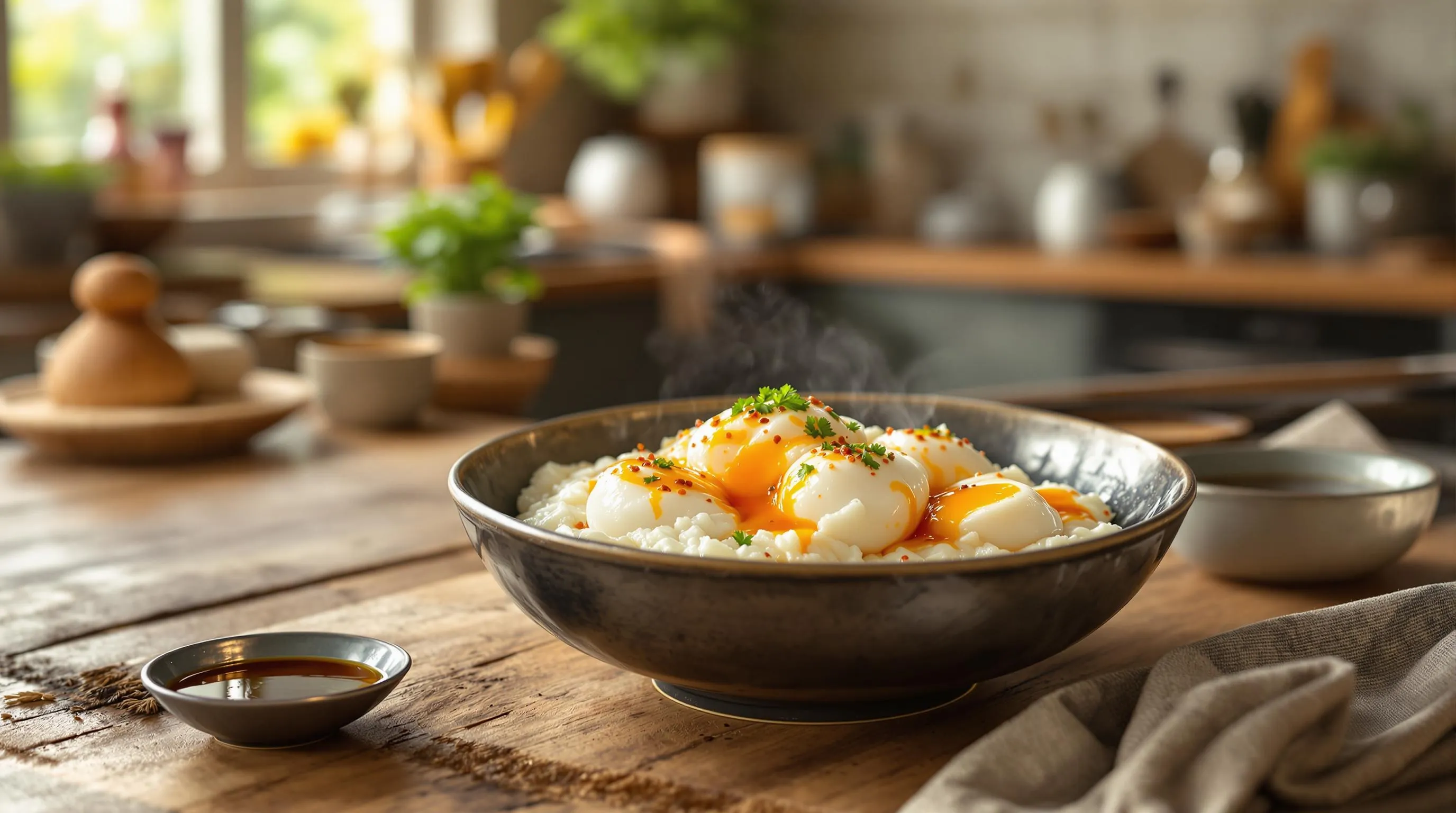
These microwave steamed eggs deliver impressive results with minimal effort making them perfect for busy mornings or quick meals. The silky smooth texture rivals traditional stovetop versions while taking just a fraction of the time.
Preserves more nutrients than other cooking methods. Microwaving eggs exposes them to heat for shorter periods which helps retain important vitamins including B1 B2 B6 vitamin C and folic acid compared to roasting frying or baking.
Saves time and energy compared to traditional steaming. Your microwave accomplishes in 2-3 minutes what would normally take 15-20 minutes on the stovetop. You can set the timer and use those precious minutes for other morning tasks.
Creates restaurant-quality results at home with minimal equipment. Many readers have shared their amazement at how closely these microwave eggs resemble traditional versions. One reader mentioned the texture was nearly identical to her grandmother’s recipe which had previously taken much longer to prepare.
Offers versatile serving options that work for any meal of the day. These steamed eggs can be enjoyed plain with just soy sauce and sesame oil or dressed up with various toppings to complement Korean BBQ Japanese dishes or simple rice meals.
Requires only basic ingredients you likely already have in your kitchen. The beauty of this recipe lies in its simplicity allowing you to create something truly special from everyday staples.
Produces a uniquely delicate texture that’s different from scrambled or fried eggs. The custard-like consistency feels luxurious and comforting similar to soft tofu or a savory flan making each bite a wonderful sensory experience.
Equipment Needed
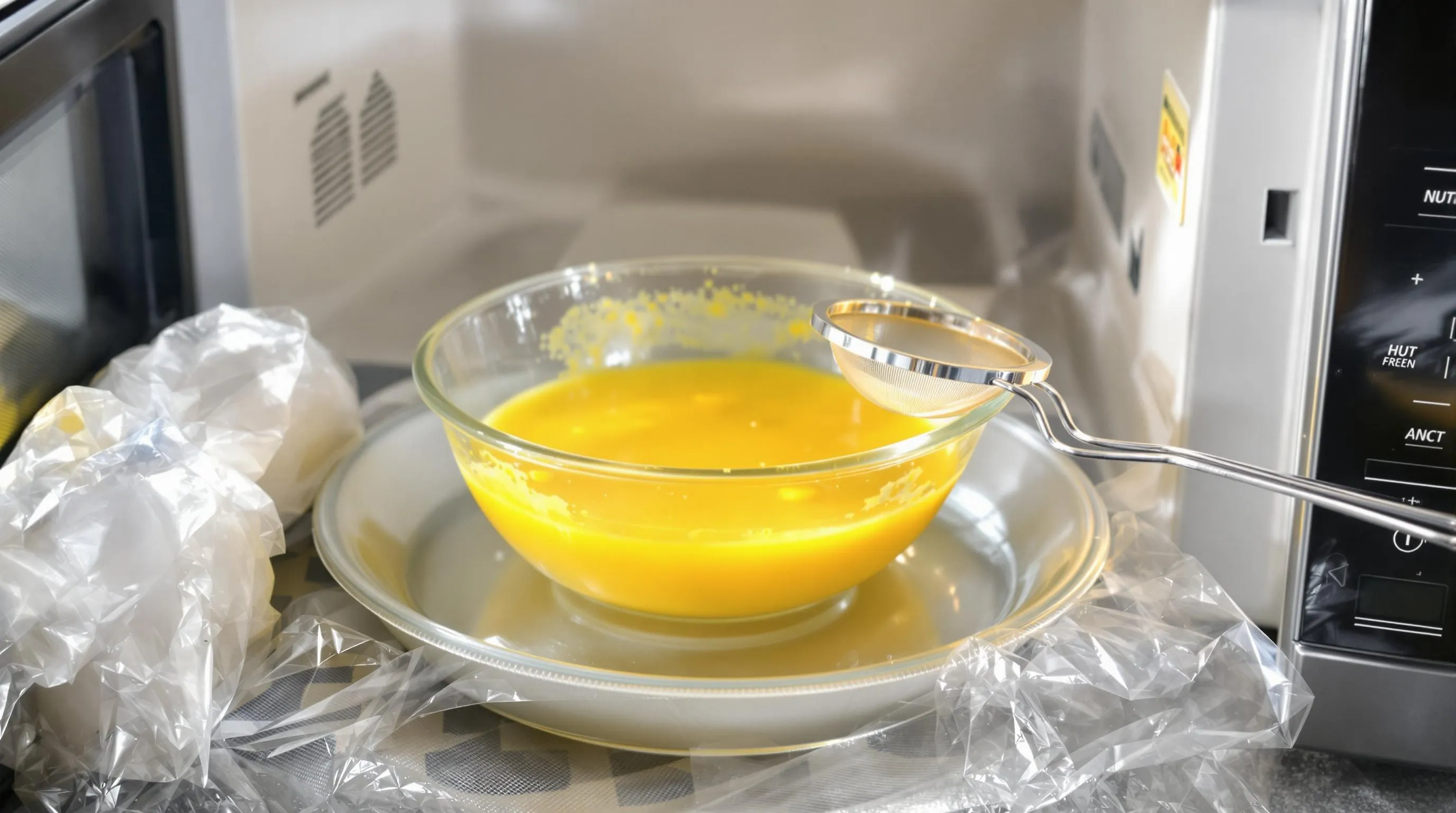
To prepare perfect microwave steamed eggs with that silky restaurant-quality texture, you’ll need just a few basic tools:
- Microwave oven – Your kitchen’s time-saving hero becomes essential for this recipe. Look for one with adjustable power settings as cooking at lower power helps create that perfect custard texture without overcooking.
- Heat-safe dish – Select a shallow, microwave-safe bowl or container that provides enough surface area for the egg mixture to cook evenly. Ceramic or glass options work wonderfully for this purpose.
- Fine mesh sieve – This tool makes a important difference in achieving that coveted smooth texture. Straining your egg mixture eliminates any clumps and ensures your steamed eggs will have that velvety finish.
- Plastic wrap – You’ll need this to cover your dish during cooking. Remember to prick several small holes in it to allow steam to escape, preventing any messy explosions in your microwave.
- Larger microwave-safe dish or baking dish – This creates a water bath environment inside your microwave, helping the eggs steam gently and evenly throughout the cooking process.
Most of these items are likely already in your kitchen, making microwave steamed eggs not only quick to prepare but also accessible without purchasing specialty equipment. The simplicity of these tools parallels the straightforward nature of this dish, allowing you to focus on enjoying the delicate results rather than fussing with complicated gadgets.
Ingredients
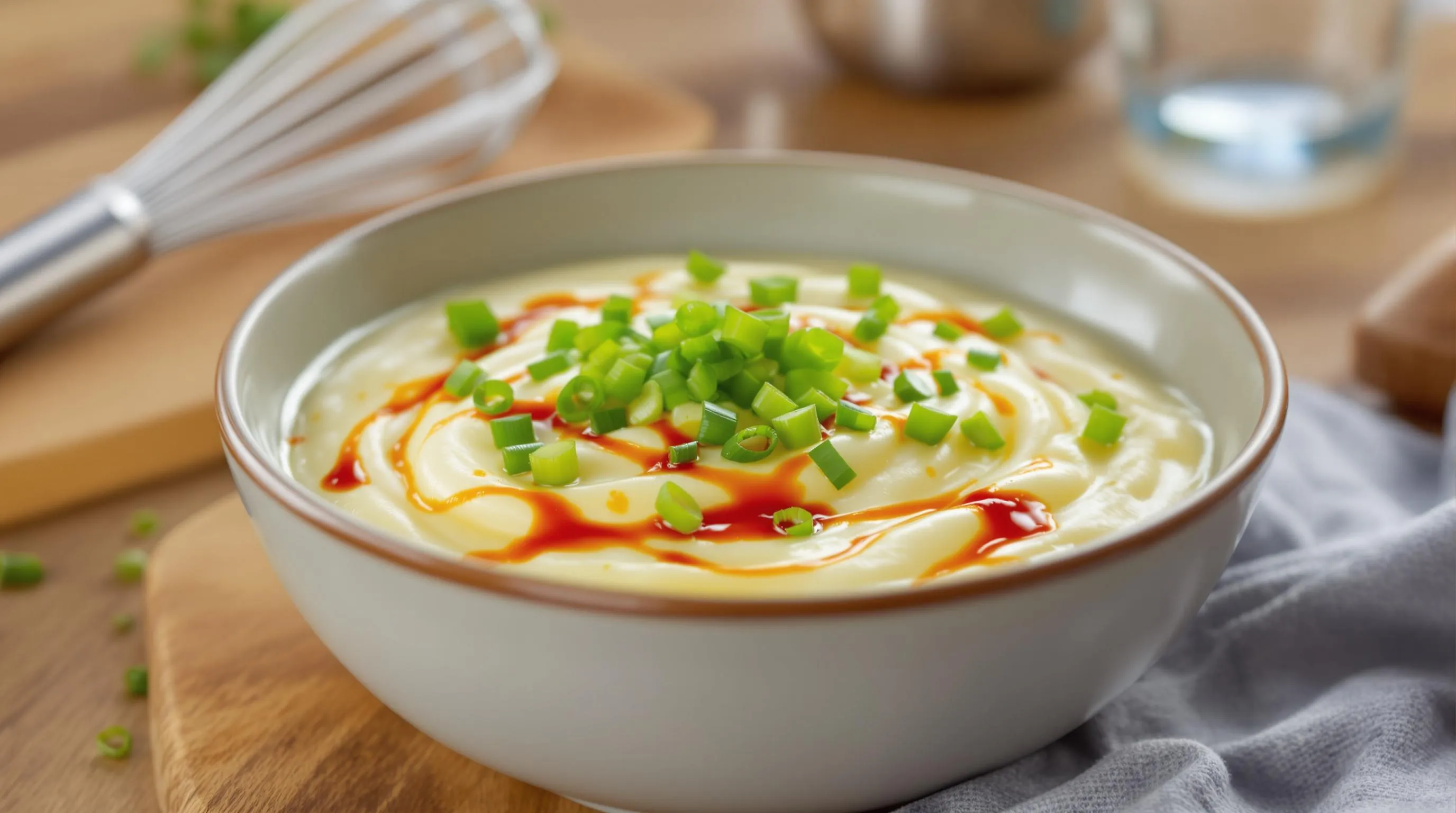
Creating perfect microwave steamed eggs requires just a few simple ingredients that you likely already have in your kitchen. The beauty of this dish lies in its simplicity, allowing the delicate egg custard texture to shine through.
Base Ingredients
- 2 large eggs
- ½ cup water or broth (equal volume to eggs)
- ¼ to 1 teaspoon salt, adjusted to taste
These three foundational ingredients form the backbone of microwave steamed eggs. Using room temperature eggs helps create a smoother texture. When selecting your liquid, chicken broth adds more depth of flavor than plain water. For the most velvety result, be precise with your egg-to-liquid ratio, maintaining the 1:1 proportion for ideal consistency.
Optional Add-ins
- 1 teaspoon cooking wine (mirin or Shaoxing wine work well)
- ½ teaspoon minced garlic
- Chopped scallions or green onions for garnish
- Drizzle of soy sauce or coconut aminos
- Few drops of sesame oil
- Chili oil for heat lovers
These flavor enhancers transform your basic steamed eggs into a more complex dish. Adding just a few drops of sesame oil before cooking imparts a nutty aroma that elevates the entire dish. Scallions sprinkled on top not only add visual appeal but also introduce a fresh counterpoint to the soft custard. Many home cooks find that a small splash of cooking wine helps eliminate any eggy smell, resulting in a cleaner flavor profile.
How To Make Microwave Steamed Eggs
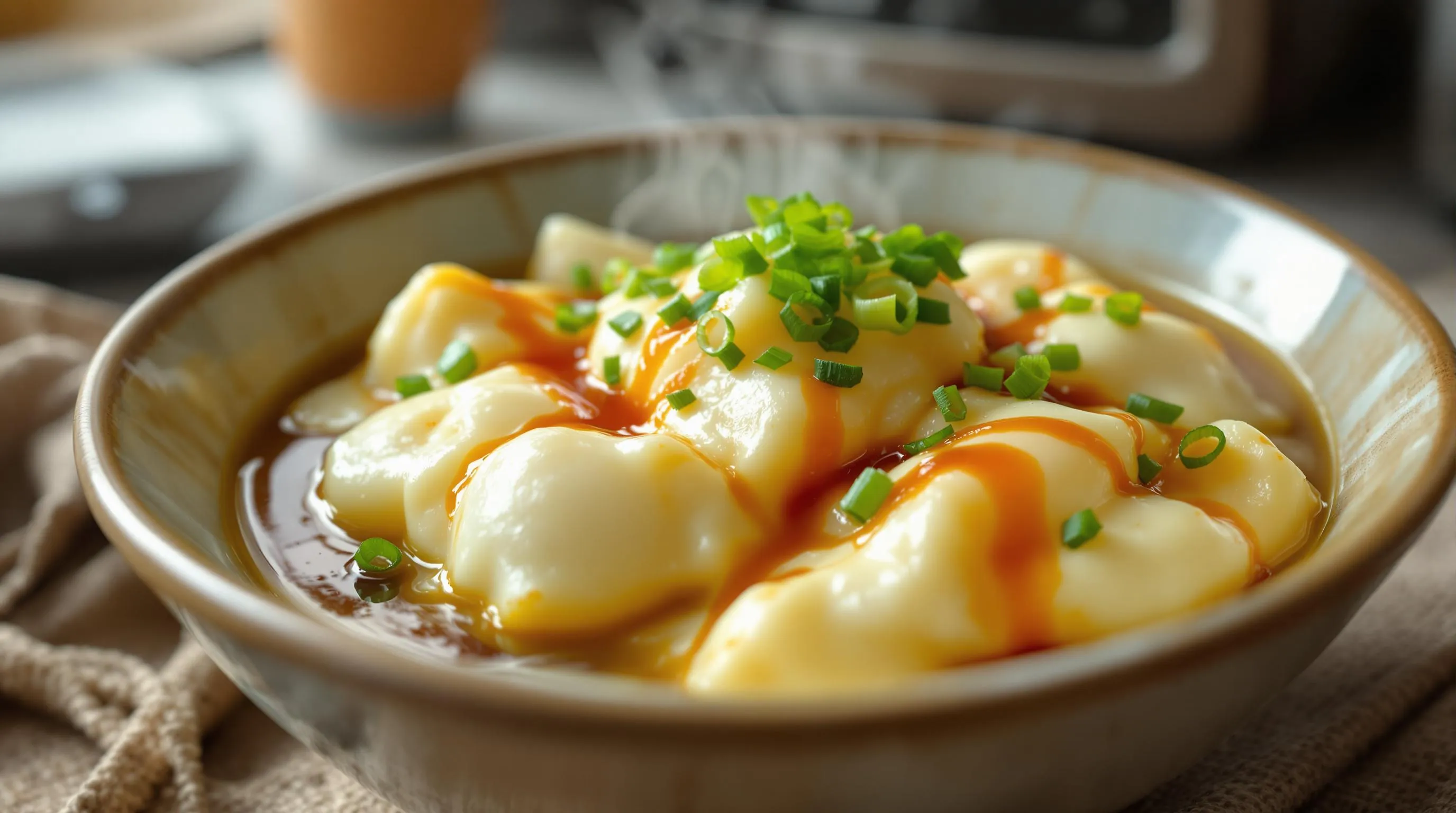
Now let’s jump into the step-by-step process of creating these silky egg custards using your microwave. This foolproof method delivers restaurant-quality results in minutes with minimal effort.
Preparing The Mixture
- Crack 1 to 5 eggs into a medium bowl depending on how many servings you need.
- Add warm water or broth in equal or slightly greater volume than your eggs (approximately 4 oz liquid for each egg).
- Season with salt to taste.
- Whisk everything together until well combined.
- For enhanced flavor consider adding a few drops of sesame oil or finely chopped scallions.
- Strain the mixture through a fine mesh sieve to remove any egg clumps and air bubbles for the silkiest possible texture.
Steaming In The Microwave
- Transfer your egg mixture to a microwave-safe bowl that allows room for expansion during cooking.
- Cover the bowl with a paper towel or plastic wrap (if using plastic wrap pierce several holes to allow steam to escape).
- Create a water bath by placing your egg bowl inside a larger microwave-safe dish filled with hot water reaching up to the level of the egg mixture.
- Set your microwave to medium power (approximately 50% or 400-700 watts).
- Cook for 4-7 minutes total checking first at the 1.5-4 minute mark depending on your microwave’s strength.
- Continue cooking in 30-second increments until the eggs are mostly set.
Checking For Doneness
The perfectly cooked microwave steamed eggs should have a custard-like consistency that jiggles slightly in the center. Insert a chopstick or toothpick into the center – it should come out mostly clean with perhaps a tiny bit of moisture. Any liquid parts indicate more cooking time is needed.
Allow your steamed eggs to rest for 2-3 minutes before serving as they will be extremely hot straight from the microwave. This resting period also helps set the texture completely for the perfect wobbly consistency.
Garnish your finished dish with thinly sliced scallions a drizzle of soy sauce or a few drops of chili oil for added flavor and visual appeal. Many home cooks report that this microwave method produces results remarkably similar to traditional steaming with significantly less effort.
Tips For Perfect Microwave Steamed Eggs
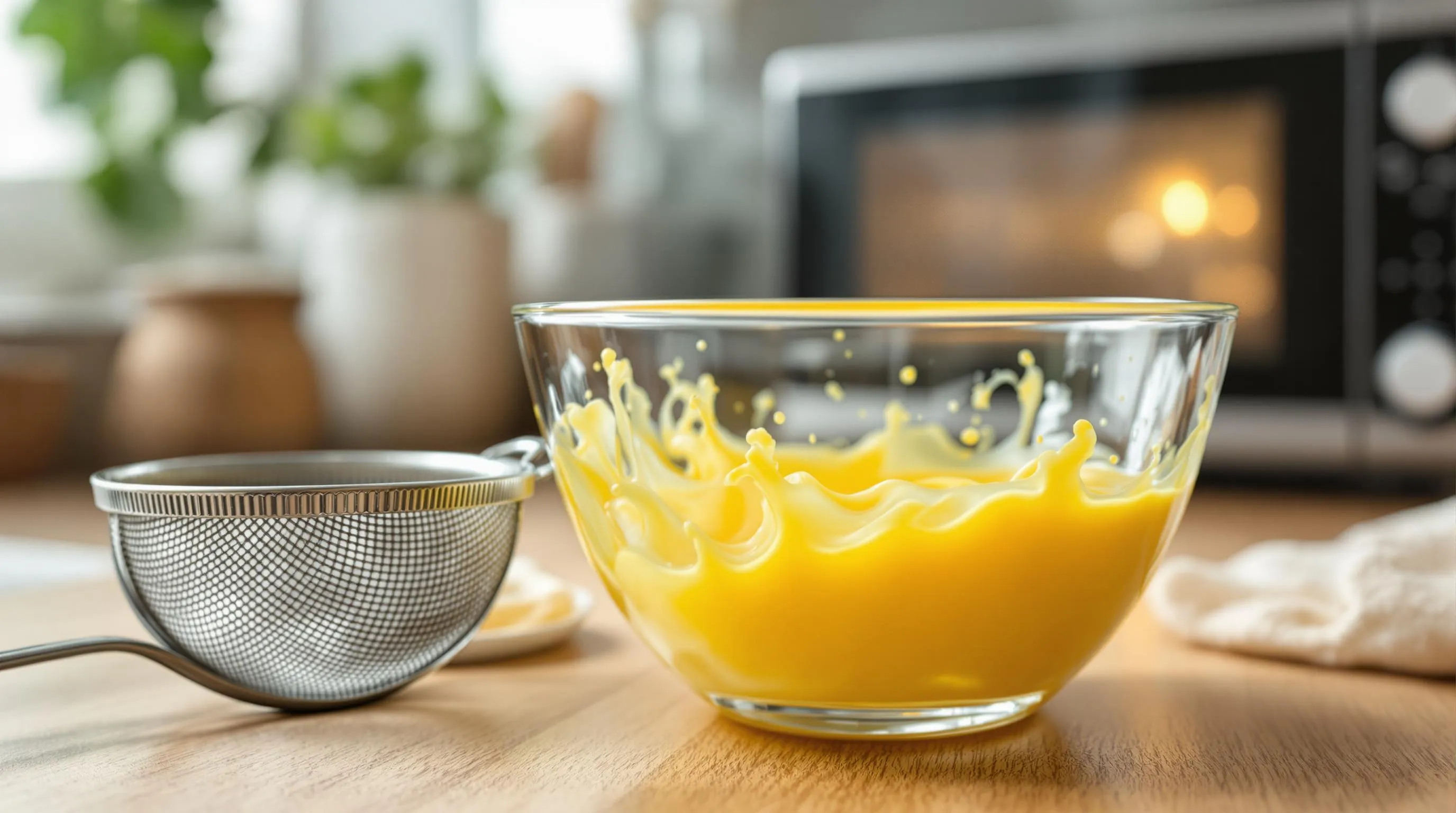
Whisk Thoroughly and Strain
Creating perfectly smooth microwave steamed eggs begins with proper preparation. Whisk your eggs and broth vigorously until completely incorporated with no visible egg white streaks. For professional results strain the mixture through a fine mesh sieve to eliminate any remaining egg proteins that could disrupt the silky texture. This extra step takes only seconds but dramatically improves the final consistency making your eggs restaurant quality.
Control Your Power Settings
Microwave wattage significantly impacts cooking results. Set your microwave to medium low power (approximately 700 watts or 50% power) to prevent overcooking and ensure gentle heat distribution. Start with 1.5 to 2 minutes for a single serving then check for doneness. The eggs should appear slightly jiggly in the center when properly cooked as they will continue firming up during the resting period. Adjust timing in 15-second increments based on your exact microwave model.
Cover Properly for Steam
Proper covering creates the steaming environment essential for custard formation. Place a microwave safe plate or paper towel over your bowl leaving a small gap for steam to escape. This traps enough moisture to create the steaming effect while preventing pressure buildup that could cause spillage or uneven cooking. The gentle steam circulation ensures your eggs cook uniformly throughout.
Use the Right Container
Select a shallow microwave safe bowl rather than a deep one. Shallow containers allow heat to distribute more evenly through the egg mixture promoting consistent cooking from edge to center. Ceramic and glass dishes perform best as they maintain steady temperatures without hot spots that could cause sections to overcook before others are done.
Monitor While Cooking
Keep a watchful eye on your eggs during the cooking process. Microwaves vary significantly in power distribution so visual checking prevents disappointment. The custard is ready when the edges are set but the center still maintains a slight wobble. Remove immediately at this stage even if it seems slightly undercooked as residual heat continues cooking the eggs after removal.
Allow Proper Resting Time
Patience yields perfection with microwave steamed eggs. Let your freshly cooked custard rest for 2-3 minutes before serving. During this resting period the eggs complete their cooking process and the texture stabilizes to achieve that coveted silky consistency. Serving too soon disrupts the delicate structure while waiting allows the flavors to fully develop and meld together.
Create a Water Bath for Larger Portions
When making larger servings place your egg mixture bowl inside a larger microwave safe dish filled with about an inch of hot water. This water bath technique provides gentle consistent heat that prevents the edges from cooking too quickly before the center sets. The method closely mimics traditional steaming and produces more uniform results especially when cooking multiple servings at once.
Flavor Variations
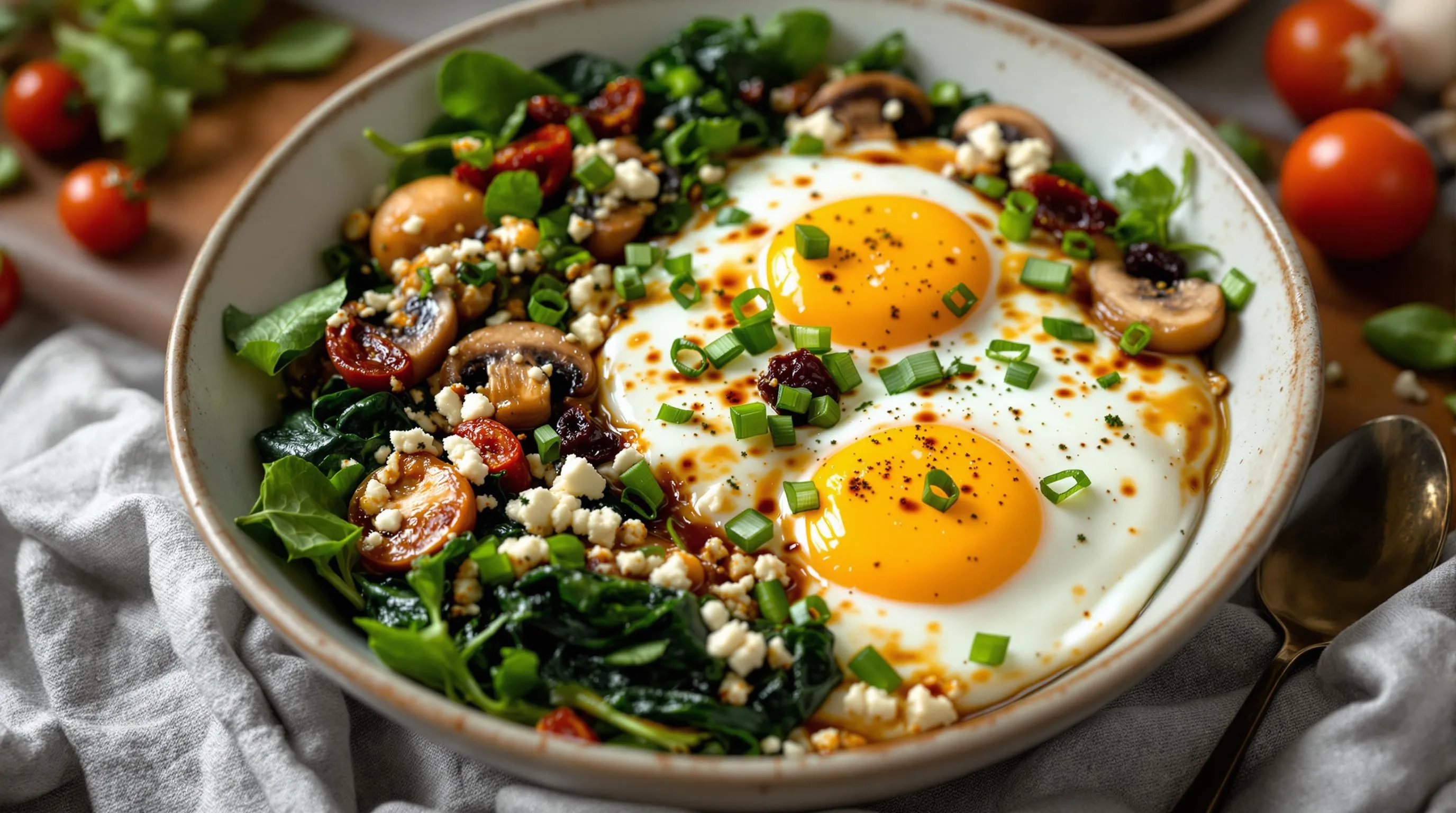
One of the most appealing aspects of microwave steamed eggs is their versatility as a canvas for different flavor profiles. You can easily transform this simple dish to suit various cuisines and taste preferences with just a few ingredient adjustments.
Asian-Inspired Steamed Eggs
Traditional Asian flavors pair perfectly with the silky texture of steamed eggs. Start by replacing plain water with chicken or vegetable broth for a deeper umami foundation. Add a few drops of soy sauce and sesame oil directly into your egg mixture before microwaving to infuse the custard with classic Asian flavors. After cooking, drizzle with additional soy sauce or chili oil for an extra flavor boost. Fresh scallions thinly sliced on top add brightness and color while fried shallots provide a delightful textural contrast against the smooth custard. This variation preserves the delicate silky texture while improving it with savory notes that complement the natural egginess without overwhelming it.
Mediterranean Style
Transform your microwave steamed eggs into a Mediterranean delight by incorporating herbs and ingredients common in this sunny cuisine. Mix dried oregano thyme or basil directly into your egg mixture before cooking. After the eggs are set drizzle with high-quality olive oil instead of sesame oil for a distinctly Mediterranean touch. Top your steamed eggs with crumbled feta cheese which adds tangy saltiness sun-dried tomatoes for sweet intensity and a sprinkle of fresh herbs. Black olives or a touch of za’atar seasoning can add even more regional character. The gentle cooking method allows the herbs to release their aromatic qualities without becoming bitter making this variation surprisingly different from its Asian counterpart even though using the same basic technique.
Breakfast Protein Bowl
Create a complete meal by using your microwave steamed eggs as the centerpiece of a protein-packed breakfast bowl. Start with the basic steamed egg recipe then build a nutritious bowl around it. Place your steamed eggs atop a bed of white or brown rice or substitute with quinoa for added protein. Surround with steamed vegetables like spinach broccoli or mushrooms that complement the eggs without overpowering them. Add protein sources such as diced chicken leftover steak or pan-seared shrimp to make this a substantial meal. Season with your choice of sauces and oils from any cuisine—soy sauce and sesame oil work beautifully but so do salsa avocado or even pesto. This variation transforms the simple steamed eggs into a complete nutritious meal that keeps you satisfied for hours while maintaining that luxurious custard texture that makes steamed eggs special.
Serving Suggestions
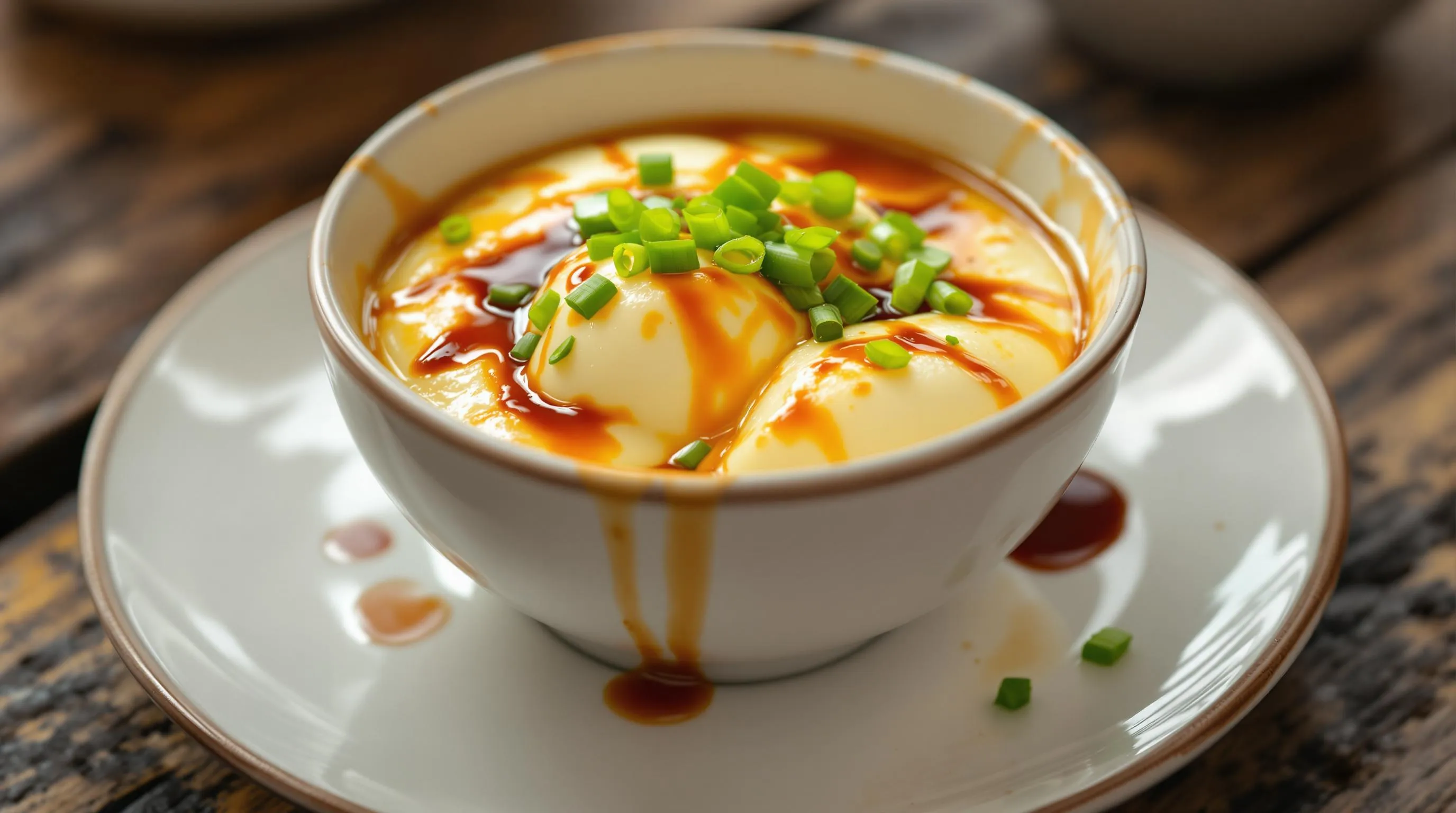
Microwave steamed eggs shine brightest when served immediately while still warm. Their delicate custard texture deserves thoughtful presentation to elevate this simple dish into something special. You can enjoy these silky eggs as a standalone breakfast or incorporate them into more elaborate meals throughout the day.
For a traditional Asian-inspired presentation, drizzle your steamed eggs with a combination of soy sauce and sesame oil. Sprinkle finely chopped scallions on top for color contrast and a mild onion flavor that complements the custard beautifully. Many home cooks also add a few drops of chili oil for a gentle heat that doesn’t overpower the eggs’ subtle flavor.
These eggs make an excellent protein-rich side dish alongside steamed rice and stir-fried vegetables. Their soft texture provides a pleasant contrast to crispier components of your meal. Try pairing them with garlicky sautéed greens or crunchy pickled vegetables for a satisfying texture combination.
Morning meals benefit particularly from these quick-cooking eggs. Place your steamed egg custard on toast for an upgraded breakfast sandwich or serve it alongside congee (rice porridge) for a traditional Chinese breakfast experience. The protein-rich nature of this dish helps keep you full throughout the morning.
When serving these eggs to guests, consider creating individual portions in small ramekins for an elegant presentation. This approach allows each person to garnish their serving according to personal preference. Small dishes of various toppings like furikake (Japanese seasoning), crispy fried shallots, or fresh herbs give your guests options to customize their experience.
Remember to let the steamed eggs cool slightly before eating as they retain heat remarkably well and can be extremely hot immediately after cooking. This brief resting period also allows the custard to set fully for the perfect wobble-like consistency that makes this dish so satisfying.
For meal prep purposes, you can refrigerate leftover steamed eggs in airtight containers for up to three days. When reheating, use short intervals at medium power in the microwave to avoid overcooking. A gentle approach preserves the delicate texture that makes this dish special in the first place.
The versatility of microwave steamed eggs extends to sandwiches as well. Try placing a slice of the set custard between bread with some crunchy vegetables for a portable lunch option that offers something different from the usual sandwich fillings.
Storage And Reheating
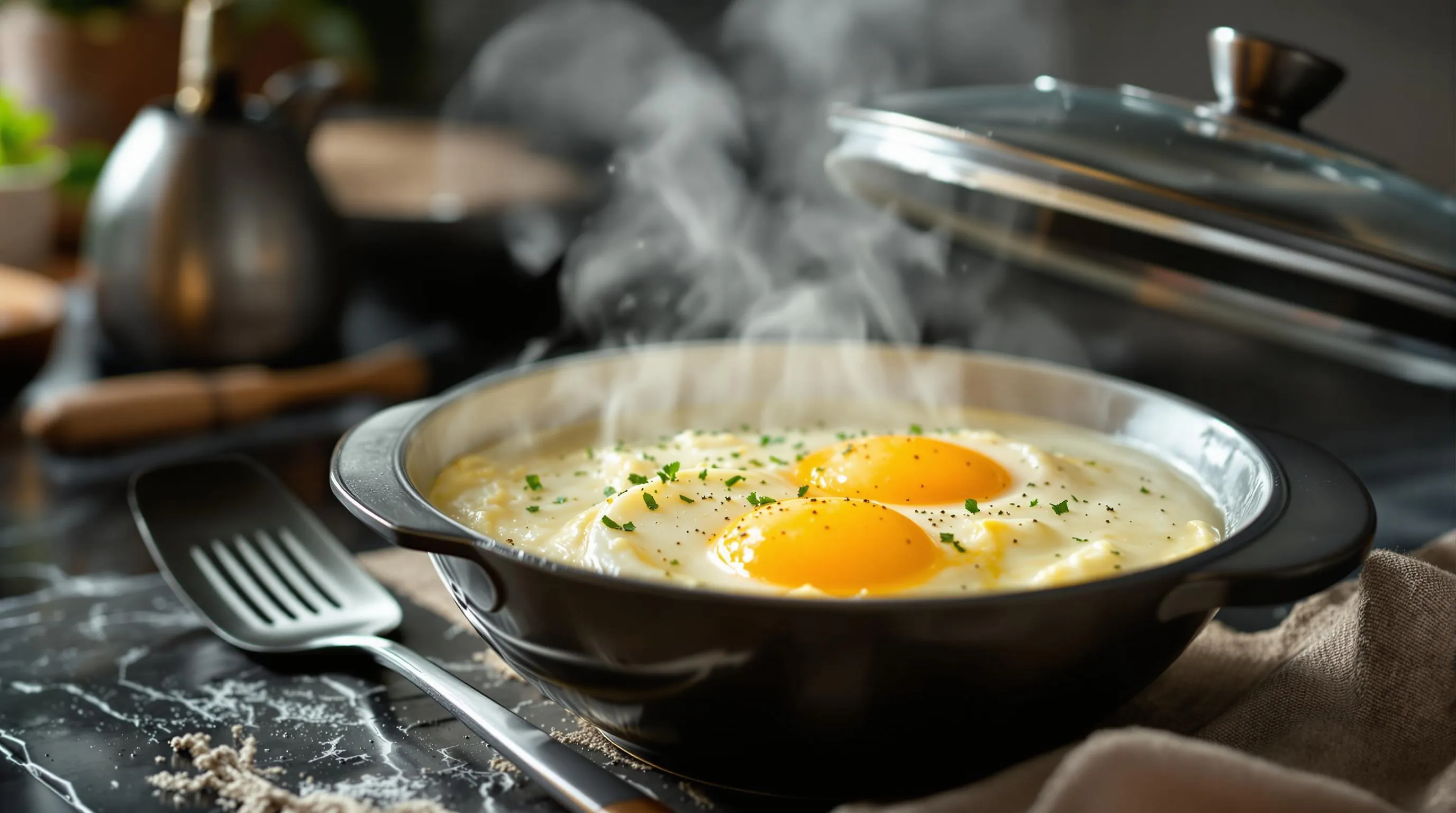
Properly storing and reheating your microwave steamed eggs maintains their delicate texture and ensures food safety. Following these guidelines helps preserve the silky custard consistency you worked so carefully to achieve.
Storing Leftover Steamed Eggs
Your microwave steamed eggs will stay fresh in the refrigerator for up to 3 days when properly stored. Transfer leftover portions to an airtight container or cover the original bowl tightly with plastic wrap. The key is creating a complete seal to prevent the eggs from absorbing other flavors in your refrigerator or developing a dry film on top.
If you notice water condensation on the surface after refrigeration, gently blot it away with a paper towel before reheating. This moisture is simply steam that has collected during cooling and doesn’t indicate any spoilage issues.
Best Methods for Reheating
When you’re ready to enjoy your leftover steamed eggs, you have two effective reheating options:
Microwave Method:
- Place your steamed eggs in a microwave-safe dish
- Cover loosely to allow some steam to escape while preventing splatters
- Heat at medium power (50-70%) rather than full power
- Warm in 20-30 second intervals until thoroughly heated
- Monitor closely to prevent overheating which can cause the eggs to become rubbery
Re-Steaming Method:
- If your eggs are still in their original bowl, this method works exceptionally well
- Set up a steaming apparatus or create a water bath similar to your original cooking method
- Re-steam for approximately 5 minutes until heated through
- This gentle reheating helps maintain the original silky texture better than other methods
Food Safety Considerations
Always ensure your reheated steamed eggs reach an internal temperature of 165°F (74°C) to eliminate any potential bacteria. Refrigerate your leftover steamed eggs promptly after serving to minimize time in the temperature danger zone where bacteria multiply rapidly.
Ceramic or heat-resistant glass containers provide the best vessels for both storing and reheating your eggs, as they distribute heat evenly and won’t leach chemicals into your food when heated.
Remember that while reheated steamed eggs remain delicious, they may lose some of their original silky smoothness. The texture typically becomes slightly firmer after refrigeration and reheating, but the flavor profile remains intact, allowing you to enjoy this delicate dish multiple times from a single preparation.
Nutritional Benefits
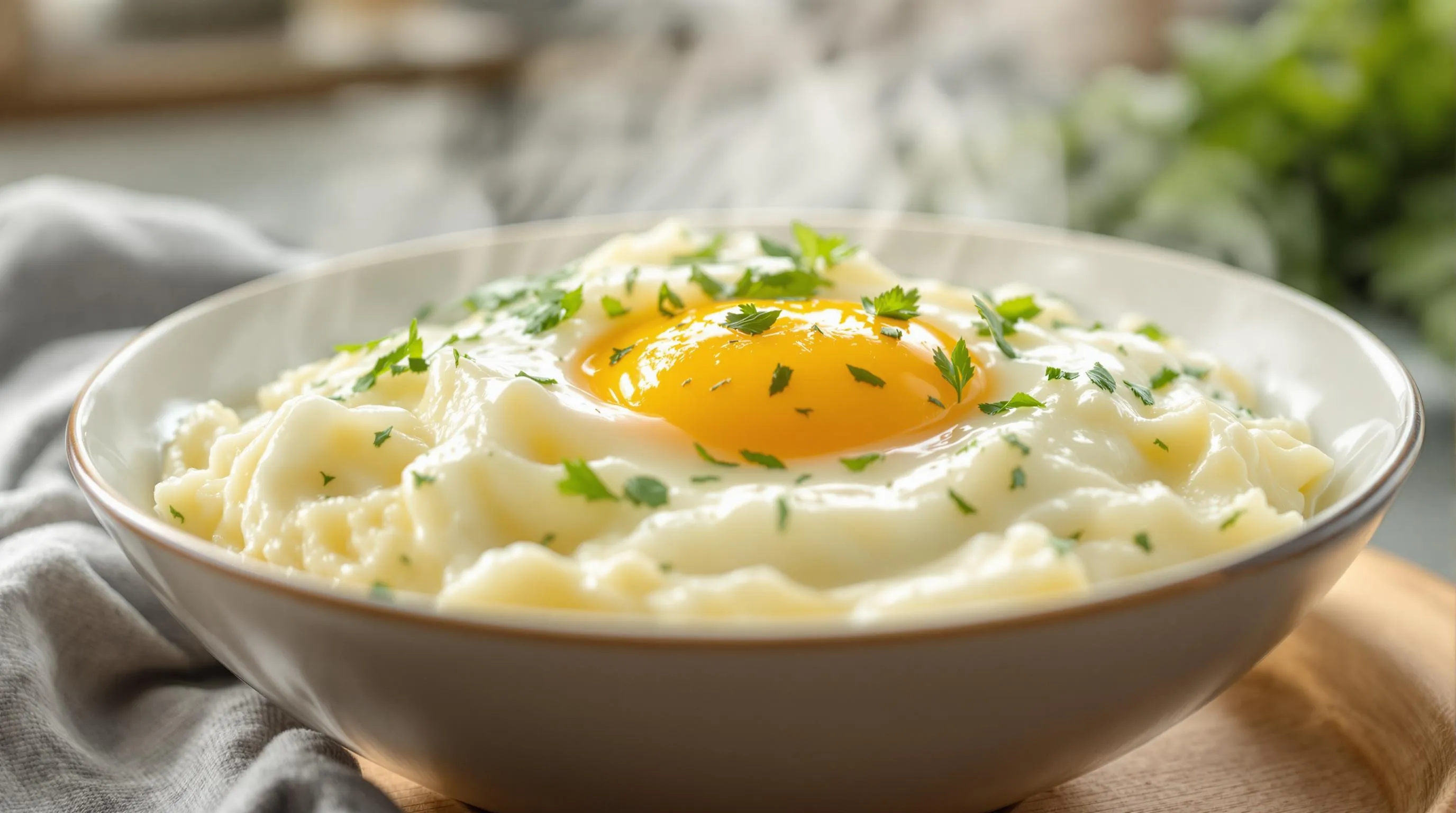
Microwave steamed eggs aren’t just convenient – they’re also a nutritional powerhouse. This cooking method preserves more nutrients than many traditional cooking techniques while delivering protein-packed goodness in every bite.
Enhanced Protein Absorption
The gentle heat of microwave steaming transforms egg proteins into their most digestible form. Scientific studies confirm that cooked eggs provide approximately 91% usable protein compared to just 51% in raw eggs. Your body can access nearly twice the protein when eggs are properly cooked through methods like microwave steaming. This makes steamed eggs an excellent choice for anyone looking to maximize their protein intake efficiently.
Superior Nutrient Retention
Microwaving preserves valuable nutrients by exposing eggs to heat for shorter periods than conventional cooking methods. This quick cooking approach better maintains heat-sensitive B vitamins (B1, B2, B6), vitamin C, and folate that support:
- Energy production throughout your day
- Optimal brain function and cognitive health
- Immune system strength and resilience
Unlike frying or prolonged boiling that can degrade these delicate nutrients, microwave steaming locks in more of eggs’ natural nutritional benefits.
Improved Biotin Availability
Raw eggs contain a protein called avidin that binds to biotin (vitamin B7) and prevents your body from absorbing it. The heating process during microwave steaming deactivates avidin, significantly improving biotin bioavailability. This matters because biotin plays crucial roles in metabolism and cellular energy production.
Nutrient-Dense, Calorie-Smart Option
Each large egg contains approximately 77 calories while delivering an impressive array of essential nutrients:
| Nutrient | Benefit |
|---|---|
| High-quality protein | Supports muscle maintenance and repair |
| Essential fats | Promotes heart health |
| Vitamin A | Enhances vision and immune function |
| Vitamin B12 | Supports nerve health and red blood cell formation |
| Selenium | Acts as a powerful antioxidant |
| Choline | Critical for brain development and function |
This exceptional nutrient density makes microwave steamed eggs an ideal choice for anyone seeking maximum nutrition with moderate calorie intake.
Food Safety Benefits
Microwave steaming thoroughly cooks eggs to safe temperatures quickly, effectively eliminating the risk of salmonella while preserving more nutrients than longer cooking methods. This cooking technique also requires less energy and supervision than stovetop methods, making it both environmentally friendly and practical for busy mornings.
Troubleshooting Common Issues
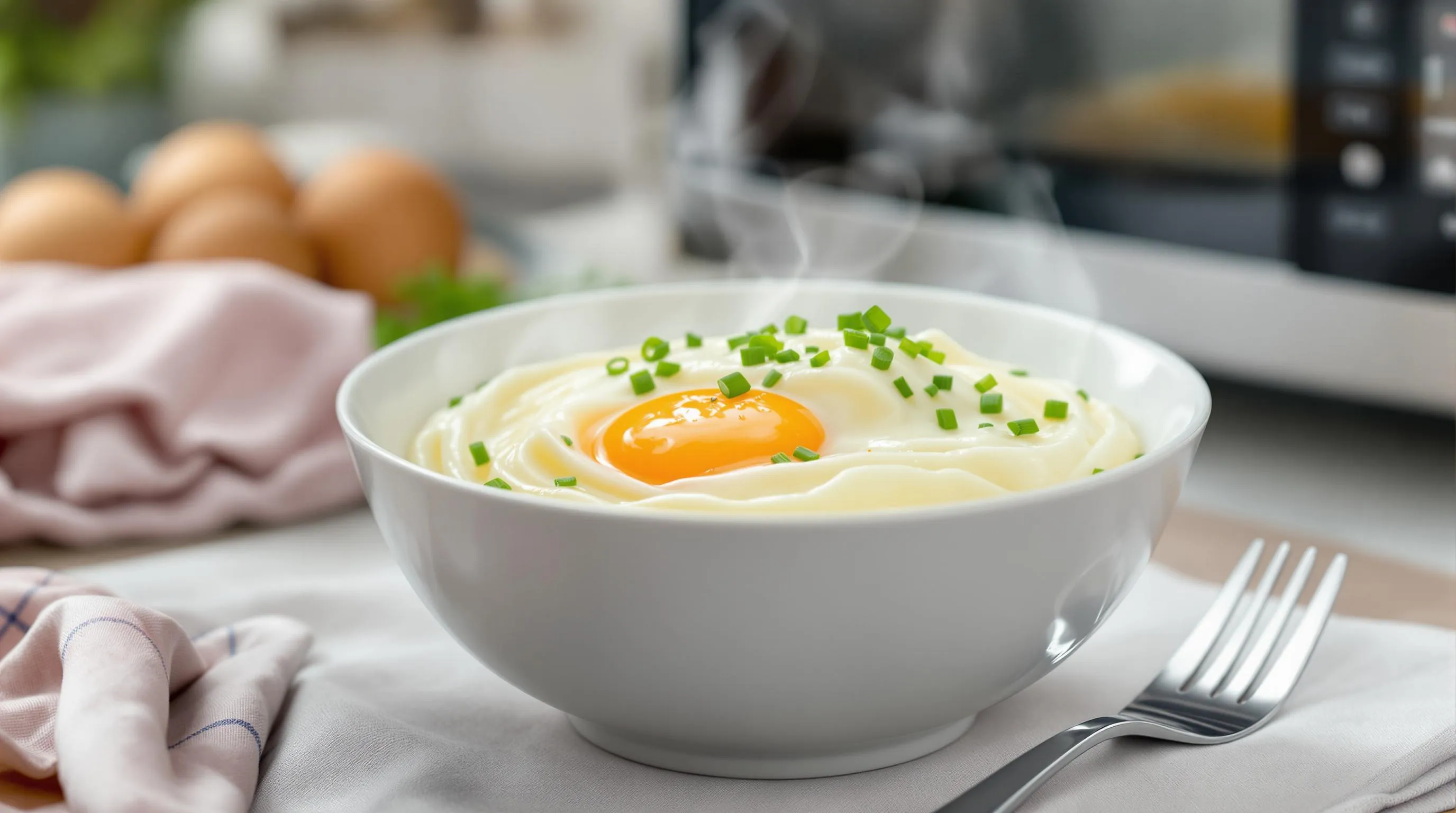
Even with such a simple dish, microwave steamed eggs can sometimes present challenges. Understanding how to address these common problems will help you achieve that perfect silky texture every time.
Uneven Cooking and Texture
Your microwave steamed eggs might develop a wrinkled surface or cook unevenly because microwaves heat food faster than traditional steaming methods. To create a smoother custard:
- Use a lower power setting around 700 watts rather than full power (1000-1200 watts)
- Fill your microwave-safe bowl only halfway to allow room for expansion
- Rotate the dish halfway through cooking if your microwave doesn’t have a turntable
- Consider using a water bath method for more gentle heat distribution
Clumpy Egg Mixture
Nothing ruins the luxurious experience of steamed eggs like encountering unexpected clumps. For perfectly smooth eggs:
- Whisk the egg mixture thoroughly until completely uniform
- Strain your mixture through a fine mesh sieve to remove any stubborn egg white strands
- Use warm (not hot) liquid when mixing with eggs to prevent partial cooking
- Beat eggs and liquid in a separate bowl before transferring to your cooking vessel
Rubbery or Overcooked Eggs
Steamed eggs should have a delicate wobble in the center. Overcooked eggs develop a tough, rubbery texture that lacks the signature silkiness. To prevent overcooking:
- Monitor your eggs closely while cooking
- Use medium-low power settings rather than high
- Cook in short intervals (30-45 seconds) and check frequently
- Remember that eggs continue cooking slightly after removal from the microwave
- Remove eggs when the center still has a slight jiggle
Explosion Risk and Safety Concerns
Microwaving eggs improperly can lead to dangerous situations. Steam pressure builds up inside eggs and can cause explosive results if not prepared correctly:
- Never microwave eggs in their shells
- Always pierce egg yolks before microwaving if cooking them whole
- Cover your bowl with a paper towel or microwave-safe lid with vents
- Leave space at the top of your container for expansion
- Use a large enough container to prevent overflow
Watery Results
Sometimes your steamed eggs might release excess liquid after cooking. This watery separation affects both texture and appearance. To avoid this issue:
- Maintain the proper egg-to-liquid ratio (typically 1:1)
- Avoid overcooking, which causes proteins to contract and release moisture
- Let the eggs rest for 1-2 minutes after cooking to set properly
- Use room temperature ingredients to promote even cooking
By addressing these common issues, you’ll master the art of microwave steamed eggs and enjoy their silky, custard-like texture with minimal effort. The perfect steamed egg awaits with just a few simple adjustments to your technique.
The Perfect Microwave Steamed Eggs Every Time
Microwave steamed eggs revolutionize your morning routine with their silky texture and incredible ease. This technique transforms everyday ingredients into a luxurious dish in just minutes while preserving more nutrients than traditional cooking methods.
You’ll find yourself returning to this recipe whenever you need a quick protein-rich meal that doesn’t sacrifice quality. The versatility allows endless customization whether you prefer Asian-inspired flavors or Mediterranean twists.
With just a microwave safe dish and basic ingredients you already have on hand you can create restaurant-quality results that will impress family and friends. Master this simple technique and you’ll never view your microwave the same way again.
Try it once and discover why so many home cooks have made microwave steamed eggs their go-to solution for delicious meals any time of day.

